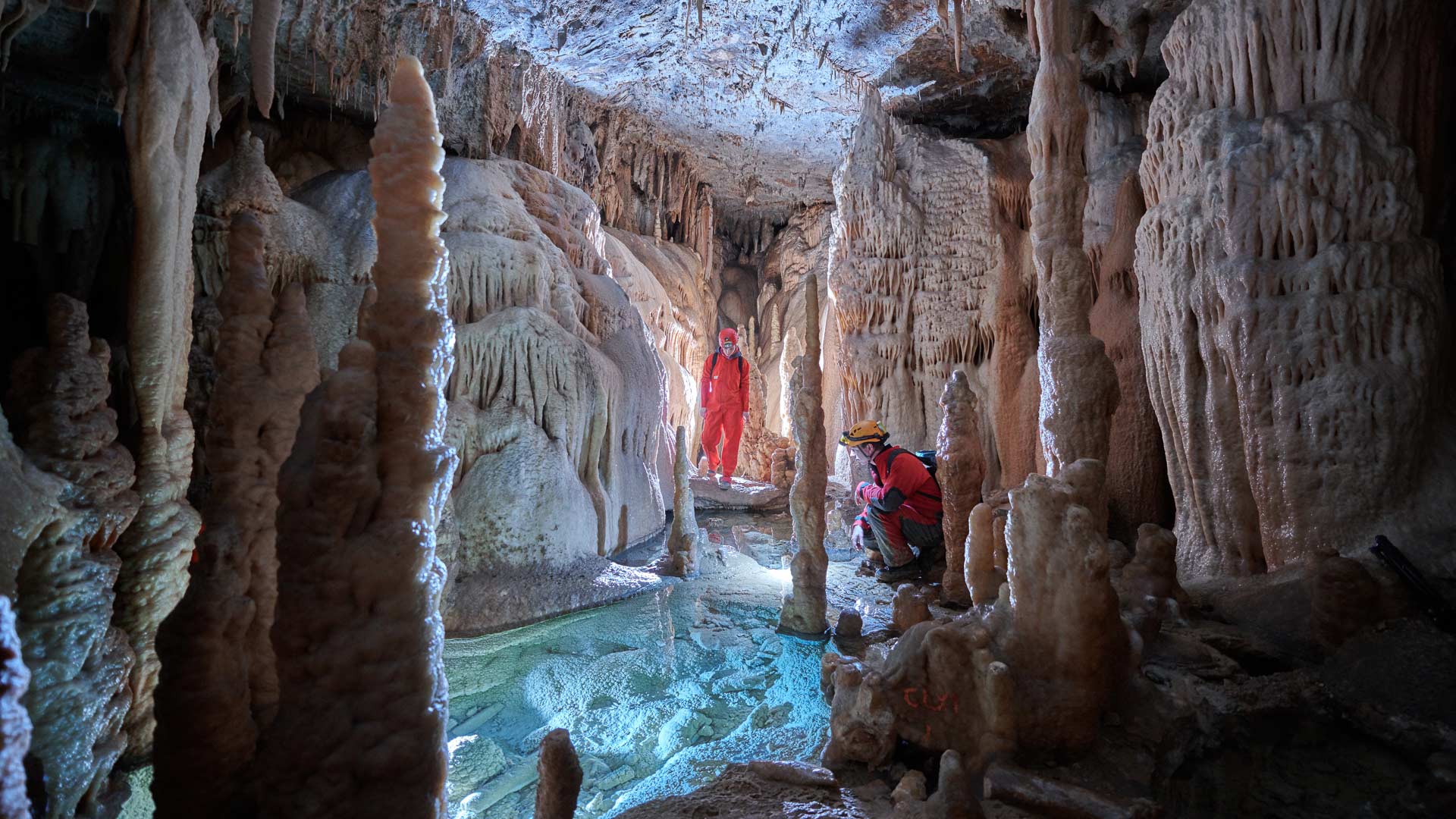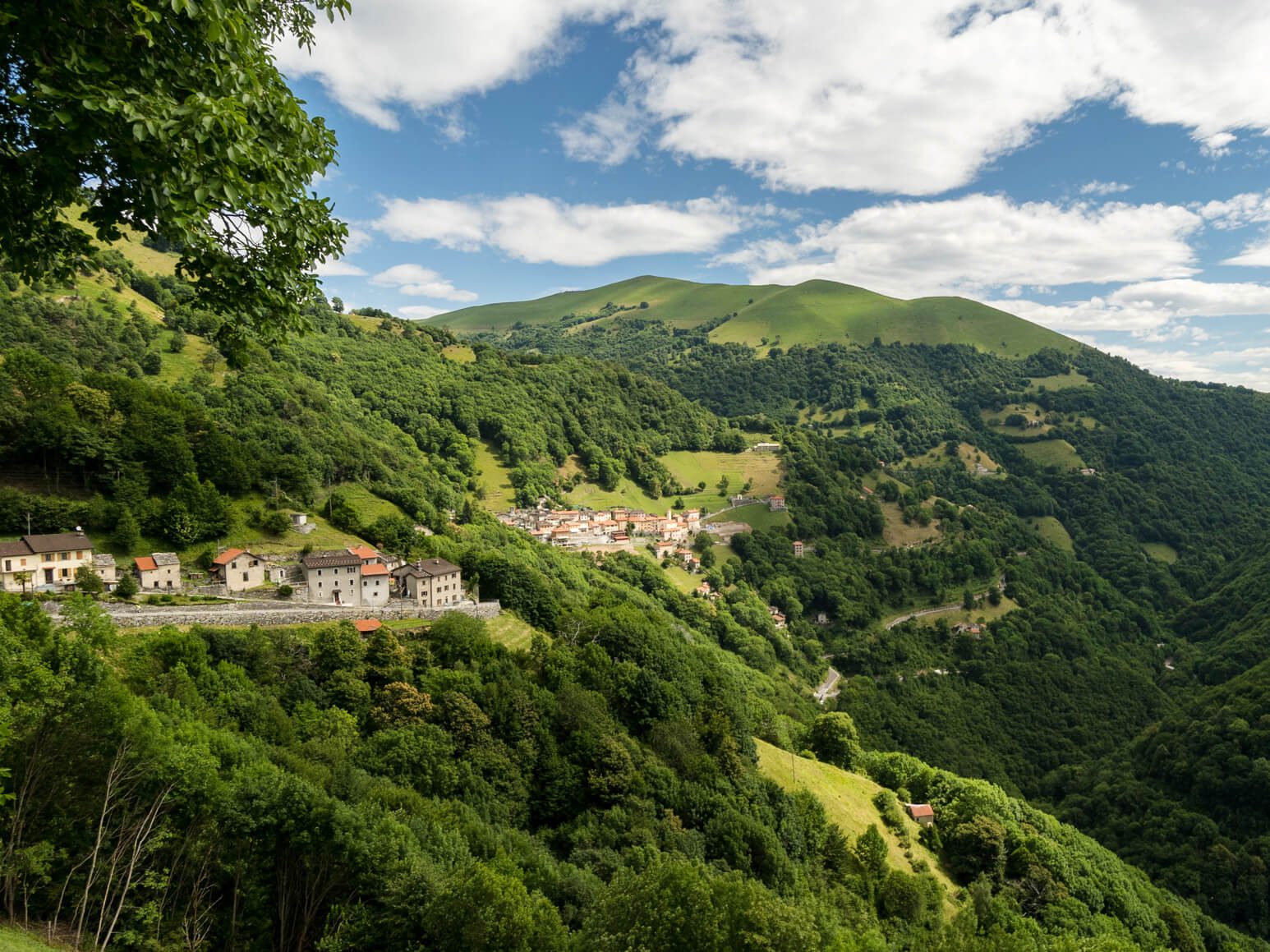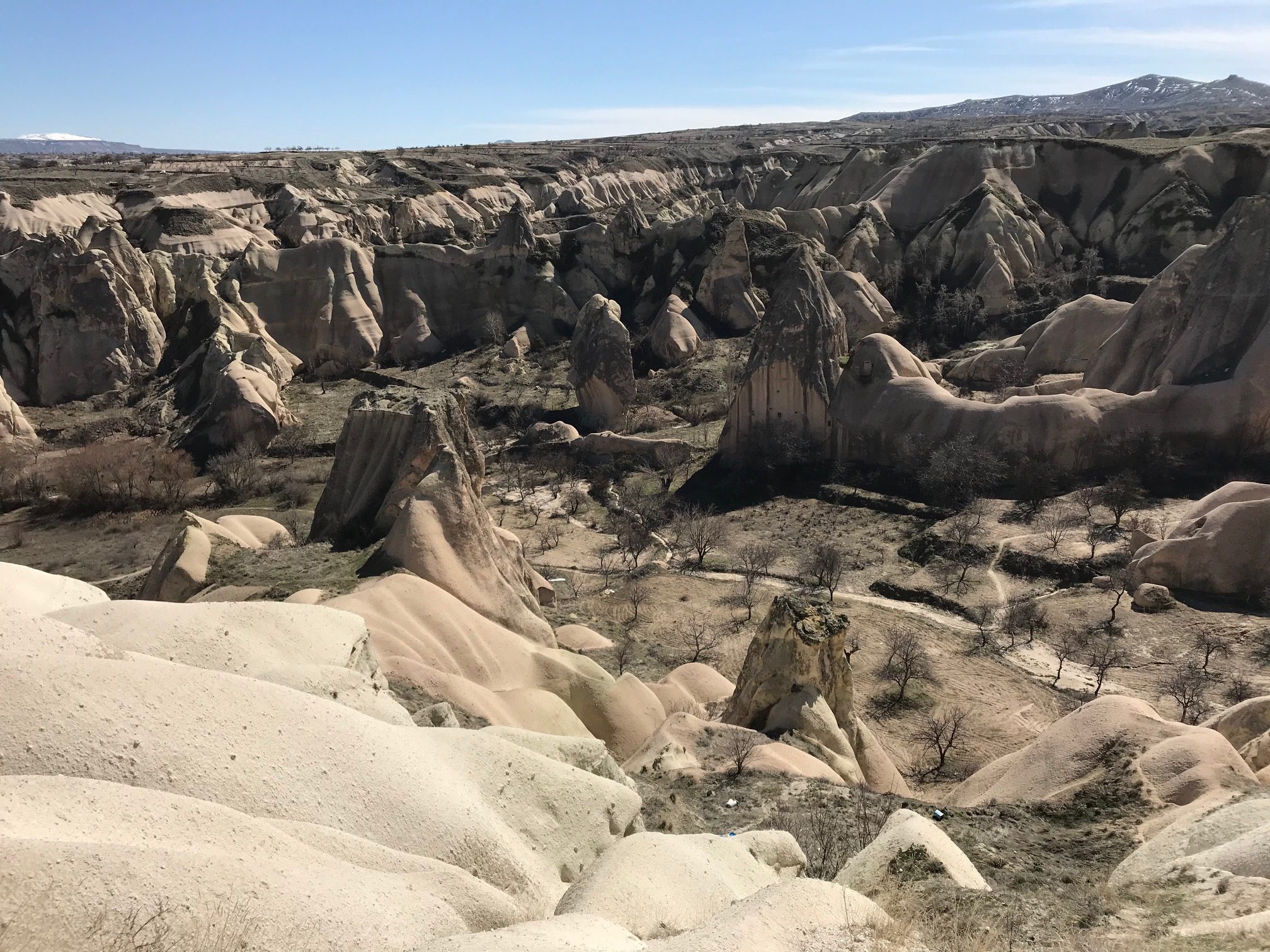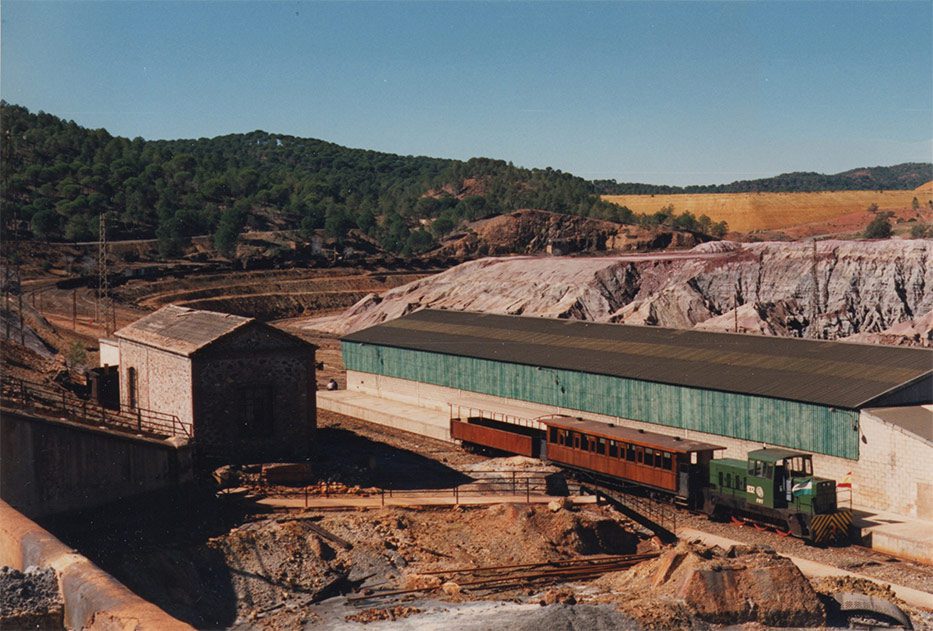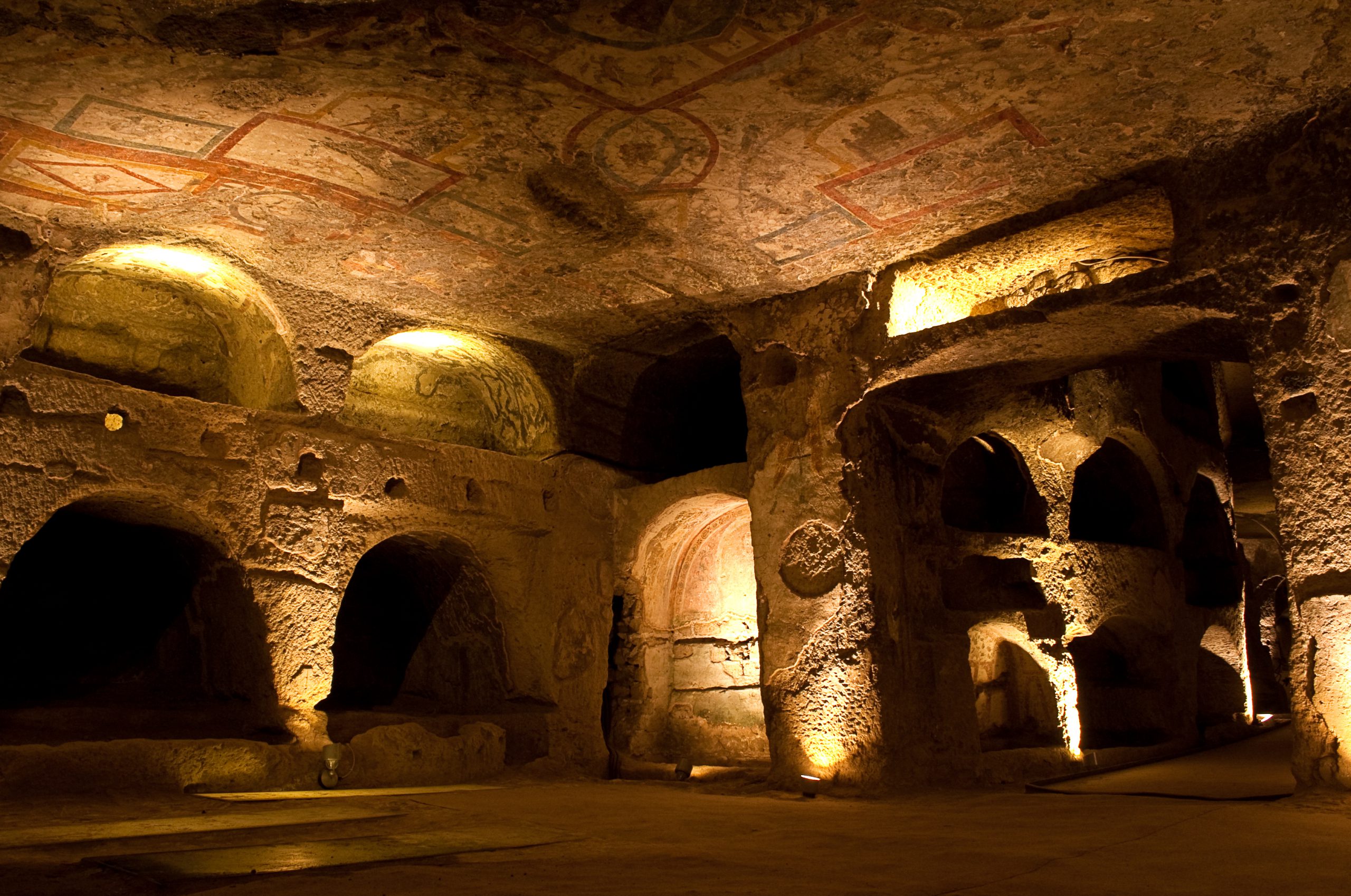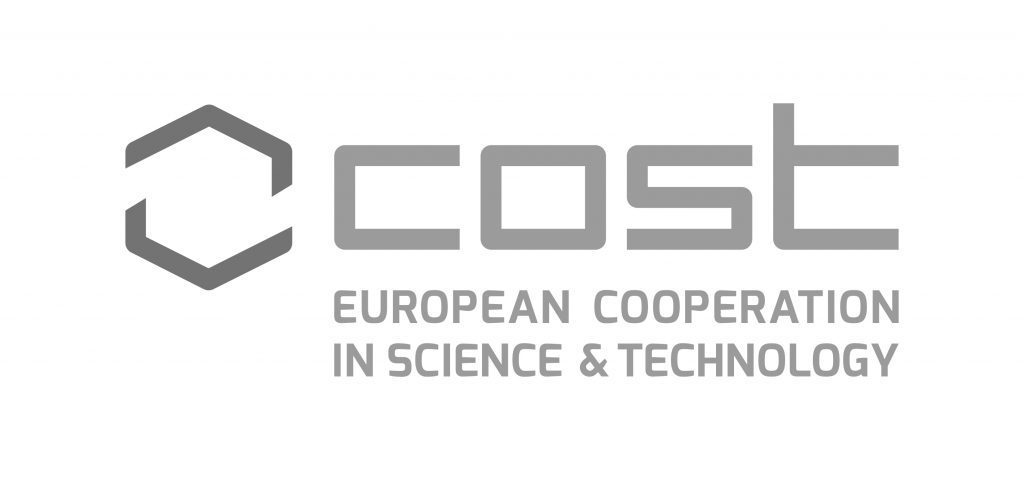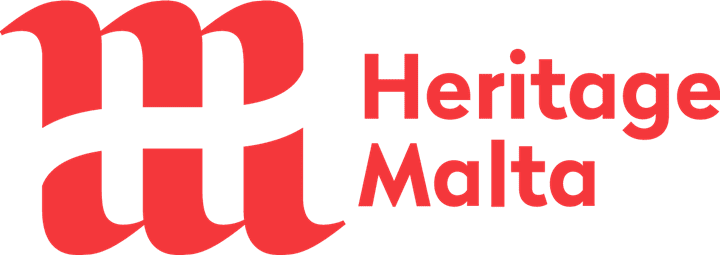Host institution: Euregio Maas-Rhein EGTC – Dreilaenderpark + Lab. Ville Territoire Paysage (City-Territory-Landscape) – Faculty of Architecture – University of Liège
Contact person: Dr. Anja Brüll + Prof. Rita Occhiuto
Overall Description of the UBH site
The transnational project area of the Three Countries Park (3LP) covers 5.000 km² and hosts about 4M inhabitants at the corner of Belgium, Germany and The Netherlands.
The diverse and culturally rich landscape of the 3LP counts underground cavities – a great number of those relating with mining activities – from different epochs, forming territorial capital for a common identity and rural regeneration across the borders.
The UBH in the 3LP is of very different kinds, comprising e.g., ancient underground flint stone mines, limestone caves and quarries, lead, zinc and coal mines, as well as natural karstic phenomena and numerous overground traces of the extraction processes, like heaps, architectural landmarks, and special biodiversity relating to the mining activities.
The numerous UBH sites in the 3LP have a protection and development status varying broadly across the borders. Some sites are very far developed for tourism, or protected as accessible nature reserves, while others are rather abandoned. Some are in a process of conversion, some in discussion of being reopened.
The Park is an interregional cooperation platform which includes the cities and the districts of Aachen, Maastricht, Hasselt, Genk, Eupen, Verviers and Liège in a partnership moving from landscape principles. The lead partner Euregio Meuse-Rhine (EMR) hosts the platform. Founded in 1976, the Euregio is one of the oldest cross-border cooperation programs and mining region in Europe. The other partners of the 3LP are:
- Provincie Limburg (NL)
- Provincie Limburg (B)
- Vlaams Gewest: Agentschap voor Natuur en Bos (ANB); Agentschap Onroerend Erfgoed (OE); Departement Omgeving
- Service Public de Wallonie (SPW): Territoire, Logement, Patrimoine et Énergie (DGO4); Département de l’Aménagement du territoire et de l’Urbanisme, Agriculture, Ressources naturelles et Environnement (DGO3); Département de la Nature et des Forêts
- Province de Liège: Direction générale Infrastructure, Energie, Travaux publics
- Ostbelgien (Deutschsprachige Gemeinschaft Belgiens)
- Stadt Aachen: Fachbereich Umwelt
- StädteRegion Aachen: Umweltamt
- Bezirksregierung Köln (NRW)
Presently, several stakeholders are exploring an initiative to investigate the feasibility of a UNESCO heritage or geo-park proposal linked to the underground heritage. On a Euregional scale, some cross-border projects have developed networks and touristic routes related to mining heritage (e.g., “Pays de Terrils” and “Grünmetropole” – 2008, or “Jaar van de Mijnen” – 2015 and Land van Kalk). The People-to People project “Dear Landscape” – 2017 – highlights “Subterranea” as a Euregional storyline important to people. Furthermore, several activities have been carried out in the Euregio in order to enhance cultural heritage and to overcome difficulties linked to its border situation such as:
- Development and consolidation of an interregional information point (GIP/GIP+) within the activities of EURES.
- Cooperative actions with ITEM for analyses of the effects of frontiers on development. Education was at the core of the process: organization of the “future-school smart region” (IBA Academy) is committed to training young generations to thein the transregional approach to cultural heritage management and fruition.
- Common actions towards valorisation and fruition of transregional touristic attractions (cycle routes, Christmas markets, museums cooperative actions, etc.).
Description of the local community
As the geological formations underpinning the UBH stretch largely across the borders, several local communities display relevant UBH sites and will be invited to participate in the Living Lab.
The 3LP network offers a platform for cooperation and the sharing of information on the preservation and development of the UBH and the landscape in the 3LP. It operates across borders, across sectors and disciplines, and across levels (e.g., regionally and locally and with a European focus). The objective of the 3LP is to contribute to a sustainable development of the Euregio Meuse-Rhine and support the implementation of the European Landscape Convention.
The involved public bodies are: Blegny and Olne Municipalities (BE, Wallonia), Agence de développement local Plombières Welkenraedt (BE, Wallonia), Kelmis Municipality (BE, German Speaking Community), Eijsden Margraten Municipality (NL), Visé Municipality (BE, Wallonia), Alsdorf Municipality (DE), Stolberg Municipality (DE), Grünmetropole (NL-DE), Riemst Municipality (BE, Flanders), the cities of Aachen, Maastricht, Genk as well as organisations dealing with landscape, cultural history and rural economy.
Private stakeholders are the 4M inhabitants of the 3LP as well as the huge number of tourists, see neighbours, who enjoy this area and its beautiful landscape all year long.
As regards third sector and local citizens associations we can find various museums with underground access like Blegny-Mine, Energeticon or Grotten van Valkenburg, some artists initiatives such as the landscape opera “topic stones” and different private science-citizen initiative for a landscape biography based on mining heritage. Morovere, some important local activities in the tourism sector are VVV_Zuid Limburg (NL), Maison des Terrils (BE), Stichting Oud Sint Pieter (NL).
The partners of the Three Countries Park (3LP) collaborate on the basis of a cooperation agreement that is renewed in phases of 4 years. An integral part of the cooperation agreement is a strategic plan that defines thematic priorities and sets a timetable. The bodies of the Three Countries Park are the steering group, the project group and also project management. The steering group is made up of partner representatives with decision-making authority and meets once a year. The steering group decides on the composition, the budget, the strategic planning and timing and the main activities of the 3LP. The project group is made up of administrative representatives of partners and meets three times a year. The project group and the project manager organize the activities of the 3LP and carry them out together with other organizations or working groups. The Euregio Meuse-Rhine is the lead partner and legal entity of the Three Countries Parks. It employs the project manager and guarantees administration of the financial resources.
The LabVTP City-Territory-Landscape of Uliège, collaborates in co-constructing events to deepen knowledge and raise awareness on the cultural values of these cross-border environments. He is the coordinator of Living-Lab which will consolidate the partnership between 3LP and Uliège.
The different actions and approached of the partner regions to deal with specific underground heritage sites so far are still to be deep explored through mapping of sites and initiatives, analysis of overexploitation / underexploitation processes, etc.
The most important past experiences in participatory activities are the above-mentioned projects: “Pays de Terrils” and “Grünmetropole” – 2008 and the People-to People project “Dear Landscape” – 2017, as well as IBA Parkstad.
Describe how can local host and Underground4value benefit from implementing the case-study
Preserving the diversity of the landscape, fostering common UBH and addressing cross-border problems together: this is what it’s all about for the partners of the Three Countries Park, who are acting entirely within the spirit of Europe. The border region itself was a centre of European development. The UBH landscape shows many traces of Europe’s bygone eras and as such it is an invaluable example of European heritage. But the landscape was and remains dynamic and is constantly changing. It should not be a museum but should develop in such a way that it can offer the basis for millions of people to live and engage in economic activity and for diverse ecosystems to thrive both today and in the future.
The socio-economic added value consists in providing a new way to consider UBH offering a tool mediating with the sectoral organization of competences characterizing the very different institutional settings and approaches among the three countries, where land-use interests are often conflicting.
As a shared process of knowledge and rediscovery of the existing landscape, the U4V will contribute to the restoration of the collective memory, revealed at a cross-border level, and set in this way the basis for designing a new common imaginary towards sustainable development of the cross-border territory.
The use of collaborative analysis and design tools such as the Living-Lab will involve local actors to recall collective representations and storylines associated across borders with the mining cavities, forming a cultural basis to be placed at the base of sustainable territorial development strategies.
The topics and outputs to be discussed within the Living Lab are:
- Inventory and overview of the presence and the status of conservation and use of the UBH in the 3LP.
- Collection of scattered knowledge incl. narratives of different underground phenomena and mining activities shaping the present landscape.
- Visualization of landscape history based on UBH.
- Elaboration of complementarities between UBH sites across the borders.
- Catalogue of storylines, best practices, business and financing models for conservation and use of UBH including solutions to sometimes contradicting interest.
Interpretive maps, subjective representations and narrative threads collected in presence and compiled in a digital archive, which will trace the cultural and social relations that interact in the surface spaces and the UBH. This will produce moments of confrontation, interviews, collection of the memories and the expectations of the local actors. Drawings and maps will not only be used as data collection tools, rather explicitly bringing attention to their status as abstractions, constructions and interpretations of spatial configurations.
A cross-reading of the morphological reasons of the mining cavities and the configuration of the cross-border urban settlement will be provided to the local stakeholders with the aim to interpret the relationships between existing structures expressed by macro-differences from large regions and micro-identities from local contexts. The method will be tested though the Living Lab and the results will be provided to the U4V community, fostering the discussion and the implementation of participatory practices relating with the UBH.
Perspective 3LP on UBH
Retrospective view:
- Understanding of common history and landscape dynamics across borders in the 3LP.
- How has the use of the underground (including soils, bedrock and minerals) influenced landscape development across borders in the Euregio?
- How is the underground-use of different epochs mirrored in today’s landscape?
- How important/ significant are the underground storylines for a landscape biography to show a common history and actual linkages across borders?
>> Can a common view / understanding of underground (built) heritage (to be actively) shared across borders support cross-border collaboration on protection, valorisation and sustainable use of UBH?
Prospective view:
- Transition towards climate resilient, diverse, quality of life and health providing landscape
- How can an underground landscape approach (as part of a broader ‘landscape approach’) contribute to sustainable territorial development/ transition management? E.g., with regard to “wise” use of soils and land >> changing collective consciousness from using land as quantitative resource (within an unlimited growth paradigm) towards understanding land as a qualitative factor for sustainable territorial development
>> Which (creative) tools of participation/ co-production (arts, drawings, participative mappings, story-telling, landscape theatre, comics etc.) can be applied in such an (actor’s oriented) landscape approach (levers, game changers)?
Living lab in between the retrospective and prospective view:
To figure out where the need for and potential of cross-border collaboration on UBH is >> with the ambition to gather a consortium for project development (Interreg or other).


